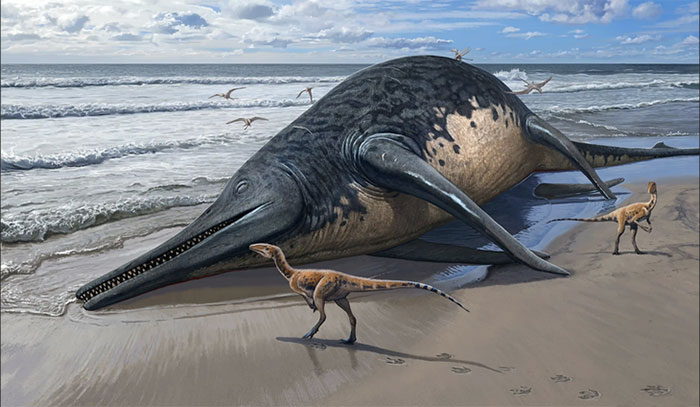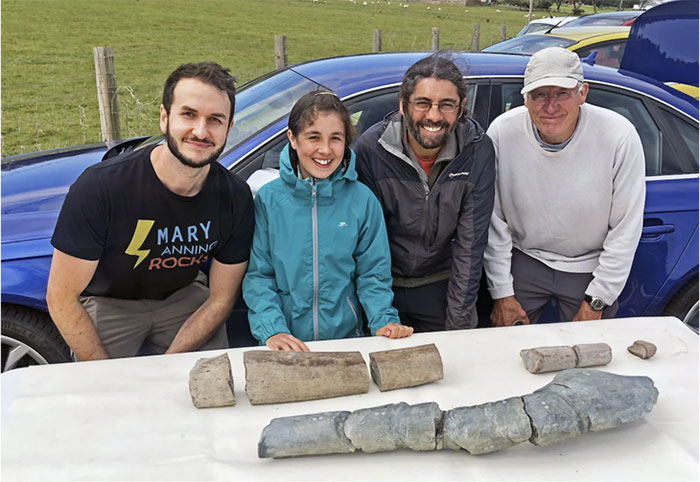Discovered the largest marine reptile fossil, up to 25m long
According to experts, the fossil discovered by an 11-year-old girl on the beach in Somerset County, England, may belong to an ichthyosaur, the largest marine reptile that has ever existed.
Ichthyosaurs lived during the age of dinosaurs. To date, science knows more than 100 species of ichthyosaurs.

Ichthyosaurs were one of the dominant marine predators in the Mesozoic era - (Photo: Sergey Krasovskiy).
This newly discovered species is believed to have roamed the seas during the late Triassic period, about 202 million years ago. Besides, the research team believes that this is not only a new species, but also a completely new genus of ichthyosaur.
The team named the species Ichthyotitan severnensis, meaning "giant fish lizard of Severn" , after the Severn estuary where it was found.
Dr Dean Lomax, a paleontologist at the University of Bristol and co-author of the study, said the giant fossil probably represents the largest marine reptile ever formally described.
Comparison with fossils of other ichthyosaurs shows that this creature was about 25m long, equivalent to the size of a blue whale.
Sediments in these samples contain rocks that indicate earthquakes and tsunamis occurred during that time. This suggests that the species lived during a time of intense volcanic activity that could have led to a major extinction event at the end of the Triassic period, according to the researchers.
Their research was published in the journal Plos One on April 17.

From left to right: Dean Lomax, Ruby Reynolds, Justin Reynolds and Paul de la Salle study fossil specimens of giant ichthyosaurs - (Photo: Dean Lomax)
Ichthyosaurs were one of the dominant marine predators during the Mesozoic era, from 251.9 million to 66 million years ago. They reached enormous sizes during the early Mesozoic Era, but it was not until the late Triassic period that the largest species appeared.
While the Mesozoic is known as the age of dinosaurs, ichthyosaurs were not dinosaurs. Instead, they evolved from another group of reptiles. Their evolutionary path closely mirrors that of whales - which evolved from land mammals, then returned to the sea. And like whales, they breathe air and give birth.
- Found fossils of marine reptiles carrying embryos
- Unexpected fossil detection of marine reptiles has 4 nostrils
- Fossil sea monsters 75 million years of raw marks the enemy's teeth
- Found the world's largest reptile egg fossil
- Prehistoric geese are called Lenin
- Discovered super long neck dinosaurs
- The big sea monster never seen
- Detection of 5.5cm long fossil marine animals
- Discovering fossil fish fossils 152 million years
- Find new flying reptile fossils
- The 70-million-year-old plesiosaur fossil resembles the Loch Ness monster
- Traces of ancient reptiles have never been discovered
 Discovered an ancient centipede fossil 99 million years old
Discovered an ancient centipede fossil 99 million years old Discovered bat-like dinosaurs in China
Discovered bat-like dinosaurs in China Discovered a 200-year-old bronze cannon of the coast
Discovered a 200-year-old bronze cannon of the coast Discover 305 million-year-old spider fossils
Discover 305 million-year-old spider fossils